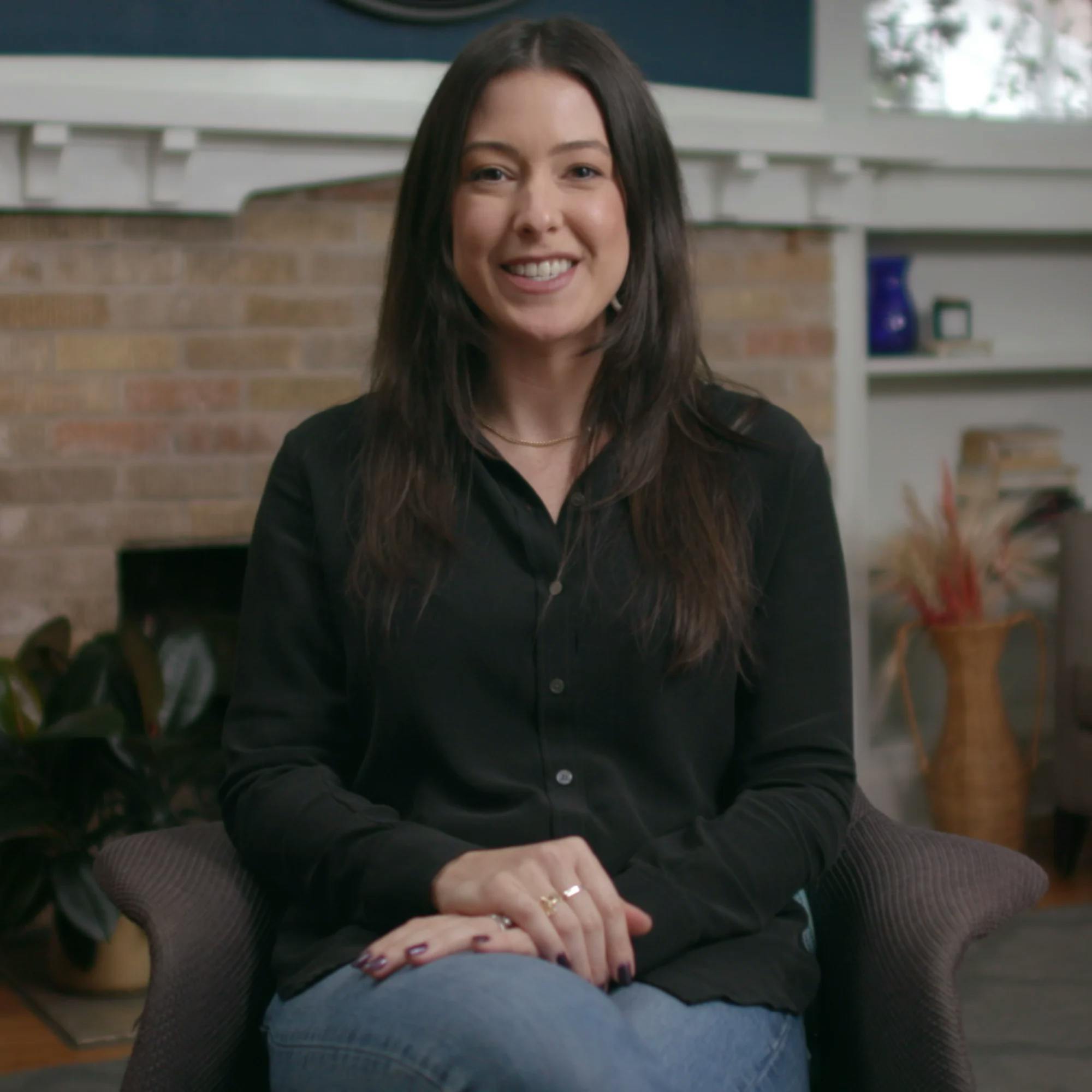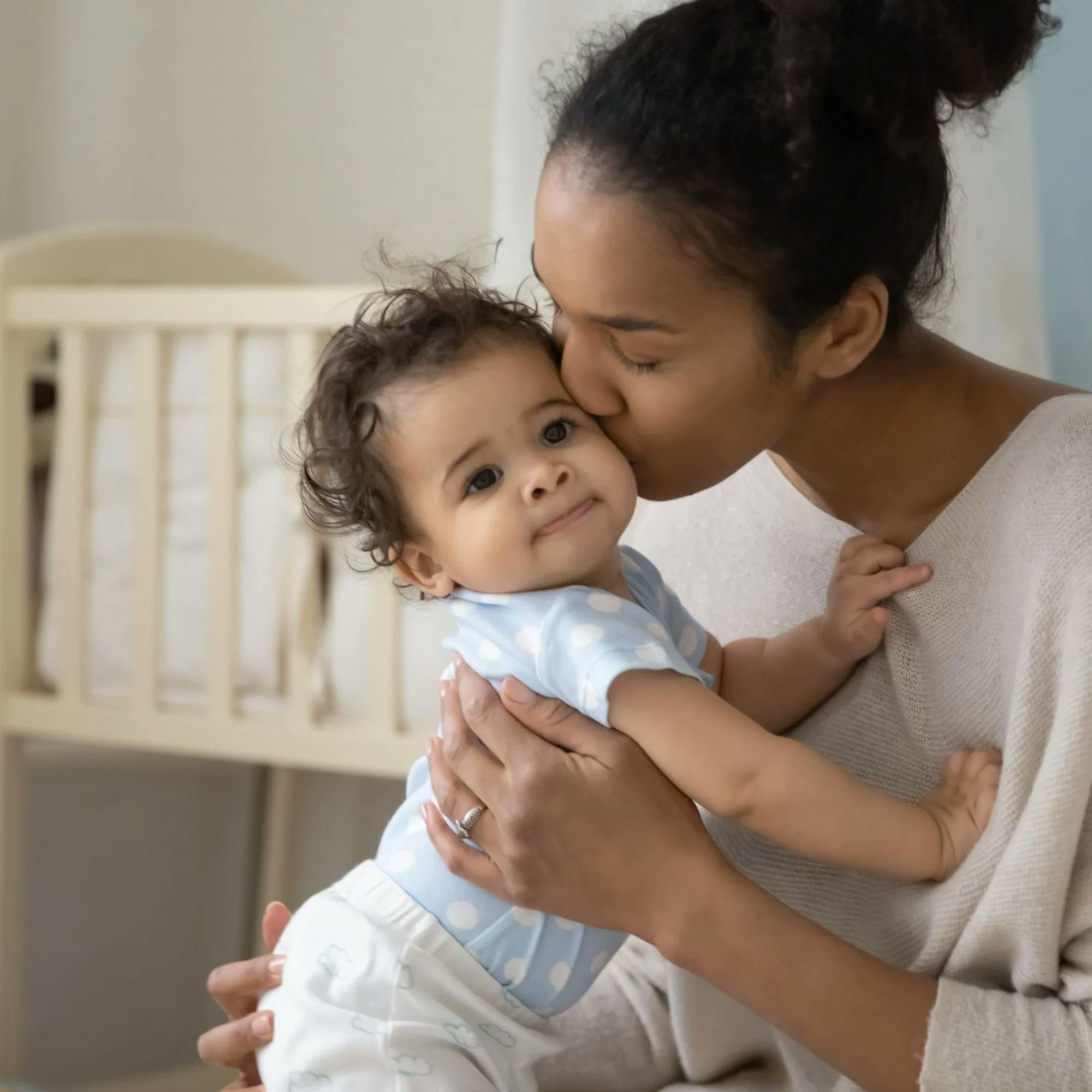
New Video Course: Help Your Baby or Toddler Prepare to Talk
 Leanne Sherred, M.S., CCC-SLP
Leanne Sherred, M.S., CCC-SLP
At Expressable, we consistently hear from families looking to support their child’s early language growth–they just don’t know how or where to start.
After all, communication building starts from the moment your child is born, long before they’ve started using those first few magical words. From gesturing, to babbling, to imitation, there’s an entire world of communication development that sets the stage for talking. The earlier you start promoting these skills at home, through simple, everyday learning moments, the sooner your child will reach those exciting communication milestones!
That’s why we’re so excited to introduce our newest course: Small Talk! This 12-part online course was developed by our expert team of speech-language pathologists. It contains over 60 minutes of content with tons of downloadable resources.
Small Talk offers support and guidance that will set up your newborn to 18-month-old for communication success. You’ll learn to:
Understand how speech and language develop
Help your child reach age-appropriate milestones
Lay the foundation for your child's first words
Better understand your child’s needs
Incorporate language learning into daily routines
Here’s a little sneak preview:
Why focus on early language development?
Whether you’re trying to understand your baby’s needs, you have a toddler who seems to be a “late talker,” or you simply want to create a language-rich environment at home, this course is for you! At Expressable, we want caregivers to feel empowered and equipped to help their child on their communication journey. We’re here to provide expertise, guidance, and support as your child learns to talk.
Communication is more than words. It’s how we express what we believe, share how we feel, and show who we are. And from birth to 18 months is a critical time in communication development.
During these early months, babies and toddlers are moving up the “language ladder.” They’re learning to respond to their caregivers, imitate sounds, pretend as they play, and communicate in other ways. Walking your child through this time is a big responsibility, but it doesn’t have to be a challenge! Speech therapists often hear families say they wish they’d started working on speech and language with their child earlier. So we created this course to help families be proactive. Setting healthy, foundational communication habits with your child now will help them become clear, confident communicators.
These habits will even set kids up for academic success. The National Early Literacy Panel conducted one of the most comprehensive studies ever on the connection between early language abilities and literacy skills, such as reading and writing. They found that a child’s ability to produce and understand verbal language was one of the earliest predictors of literacy success. That’s even more reason to make sure children are meeting these critical communication milestones! You can learn more about the importance of early communication development by watching the first lesson of the course:
Developed by expert speech-language pathologists
Small Talk is taught by Leanne Sherred, M.S., CCC-SLP, the President and Chief Clinical Officer of Expressable. She received her Bachelor's degree from The George Washington University and her Master's degree from Northwestern University, and she’s been a practicing speech-language pathologist ever since. Leanne founded Expressable to create a more effective care model for children and better experience for families. Today, she oversees more than 60 talented speech therapists who have the privilege of working with thousands of children. Leanne describes the course this way: “My goal is to combine the latest research with proven practices we use in speech therapy every day, distilling it down into a fun and interactive course to help you share the gift of communication with your kiddo. I know the feeling of stressing about your child’s development, but we’re here to help!”
What’s included in the course?
Small Talk includes 12 video lessons that add up to more than 60 minutes of content, including plenty of real-life examples of a parent and child putting the strategies into action. All strategies are evidence-based and regularly used by speech-language pathologists in their clinical work.
Included with the course are a collection of handy resources available to download. These downloads complement the lessons and even include a milestones checklist, which will help you track how your child is progressing in their speech and language skills.
What will I learn?
Still curious about the details? Here’s an overview of what’s included in each course lesson:
Lesson 1: The power of communication Communication is one of life’s foundational skills. And communication development starts at birth, so it’s never too early to start promoting your child’s speech and language skills. That growth is essential for children’s social and emotional well-being, as well as their future academic success. And you already have everything you need to do it: you! It’s simply a matter of knowing where to begin and what techniques to use.
Lesson 2: What’s speech and language, anyway? In this lesson, we cover some basic definitions associated with communication, such as vocalizations, speech, expressive language, and receptive language. This knowledge will help you understand your child’s development, track their progress, and be prepared for the lessons ahead.
Lesson 3: Language milestones during 0-18 months of age Learn the essential language milestones for children from birth to 18 months–from responding, to cooing and babbling, to waving and pointing, to speaking their first words. As a caregiver, it’s important to understand and monitor these signs of typical development, so you know if your child is on track or needs extra support.
Lesson 4: Foundational support strategies Children learn by watching and interacting with those around them. So as their caregiver, you’re uniquely equipped to support your child’s language growth. This lesson covers some basic, universal strategies you can use every day, such as modeling, wait time, positive reinforcement, and consistency.
Lesson 5: Technique: Gesturing, signing, and body language All techniques featured in this course are backed by research and used successfully by speech-language pathologists. Best of all, they don’t require a major shift in how you interact with your child–just small, purposeful changes that can make a big difference. This lesson focuses on how to help your child communicate their wants and needs before they can speak.
Lesson 6: Technique: Speaking "parentese" Speech-language pathologists refer to “baby talk” as parentese. It involves speaking in an engaging way, slowly and at a higher pitch. Talking regularly to your baby is a powerful way to promote their language acquisition. And there are many benefits to speaking parentese, even if your child can’t respond with words yet.
Lesson 7: Technique: Imitation In this lesson, we discuss one of the most foundational areas of language growth. Imitation is when a person copies or repeats gestures, sounds, or words, and it starts to happen as soon as we’re born. Learn the four types of imitation that promote communication skills and how to start using them with your baby today.
Lesson 8: Technique: Labeling and requesting After imitating words, the next major developmental goal is speaking independently. This starts with labeling, in which children learn to say the names of various items–all by themselves! After that, they’ll begin using their new vocabulary for the purpose of requesting. Here’s how to teach your child these important speech skills.
Lesson 9: Technique: Functional words As your child’s vocabulary expands, focus on teaching them functional words. These are words your child uses in everyday situations to express their wants or needs. Examples might be the names of family members, favorite foods, or words like “hurt” or “I want.” This video shows you easy ways to teach these essential words.
Lesson 10: Technique: Purposeful play Playing with your child is one of the best ways to improve their speech and language development. “Purposeful play” refers to using play-based activities to target and promote skills related to communication. Watch this video to learn how to play with toys appropriately, elicit sounds when playing, and use toys to grow your child’s vocabulary.
Lesson 11: Technique: Reading with your baby It’s impossible to overstate the importance of routinely reading to your child. Books expand children’s vocabulary, develop their listening and comprehension skills, and help them succeed in the classroom. Learn techniques for reading with babies and toddlers, along with tips for choosing books.
Lesson 12: When is early intervention recommended, and how do I start? Some children do not meet expected speech and language milestones on their own and need professional help to catch up. Speech and language delays are common; in fact, about 8% of all children in the U.S. have a diagnosed communication disorder. Here’s what to do if you suspect your child is delayed. The earlier they receive the support they need, the better!
Here at Expressable, we know your child is bursting with questions, emotions, and thoughts they want to share. We want the world to hear them, and we’re here to support you as their caregiver along the way. You will never regret the time and effort you instill in your child’s development. The benefits are lifelong.
How Expressable Can Help
Concerned your child isn't reaching age-expected milestones? Looking for communication support from a professional? Expressable is a national online speech therapy practice serving children and adults. We treat all major areas of communication and feeding, offer flexible hours including evenings and weekends, and accept most major health insurance plans. We’re proud to have earned more than 3,000 5-star reviews from our clients (4.9/5 average).
Our therapy model is centered on parent and caregiver involvement. Research proves that empowering caregivers to participate in their loved one’s therapy leads to better outcomes. That’s why we combine live, 1-on-1 speech therapy with personalized education and home practice activities for faster progress.
Communication is more than words. It’s how we share how we feel and show who we are. We’re here to help you or your child do just that.










